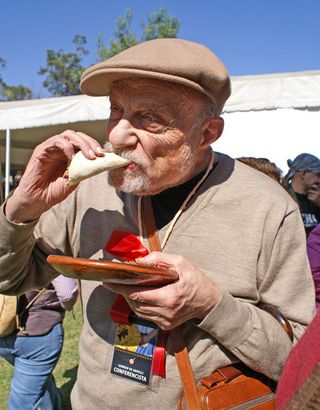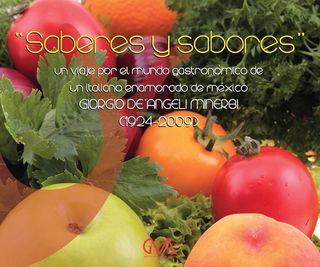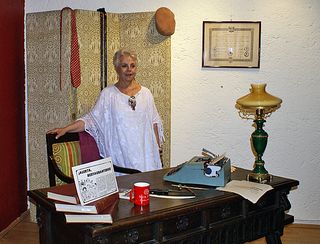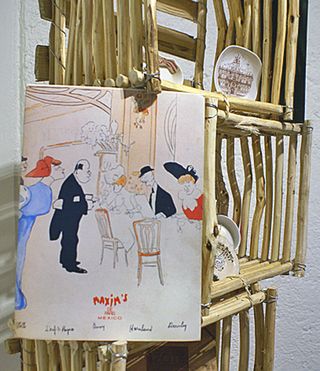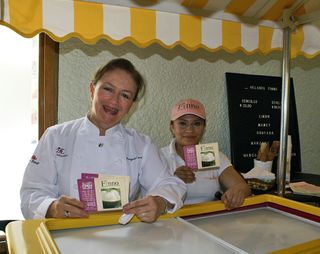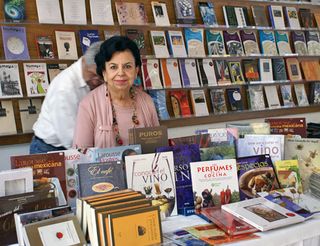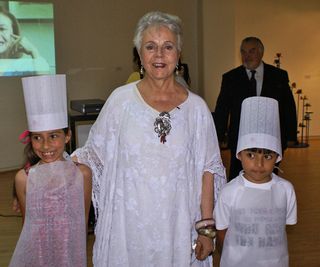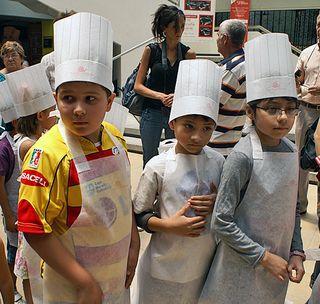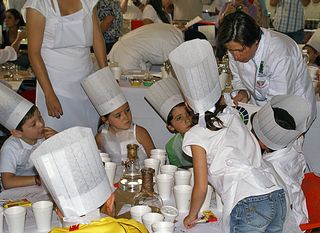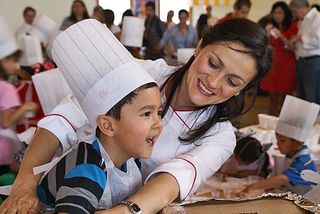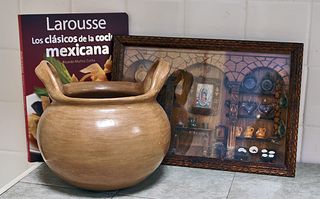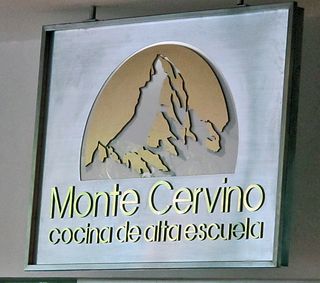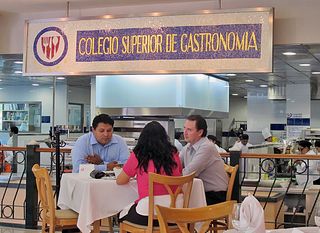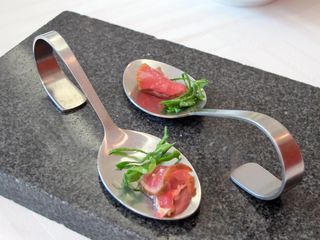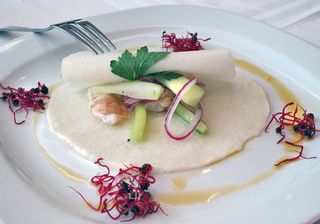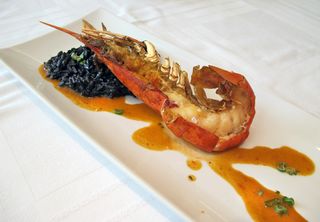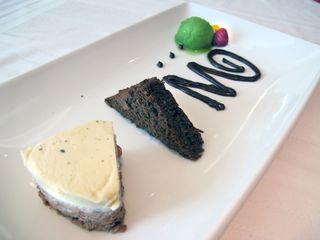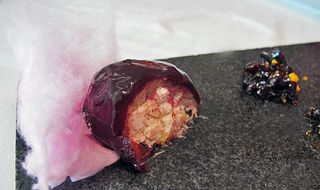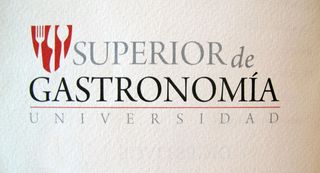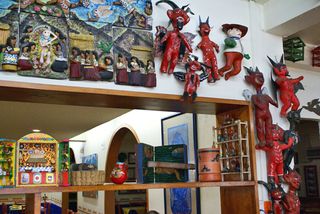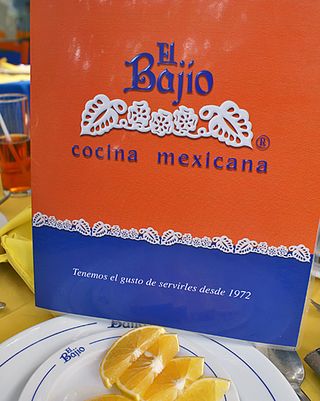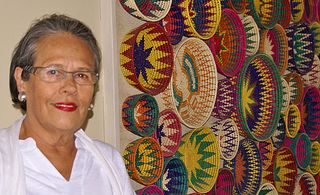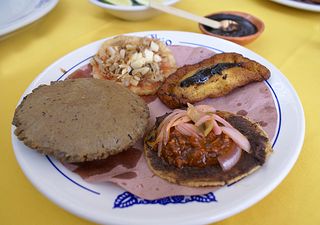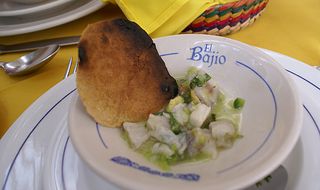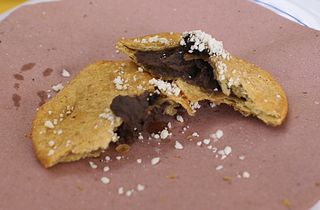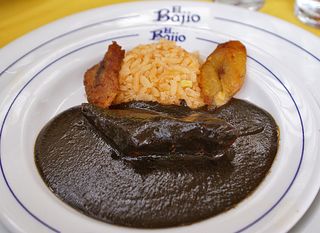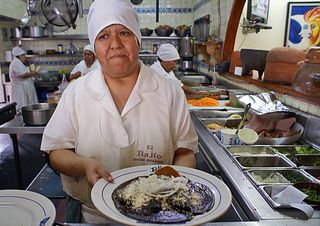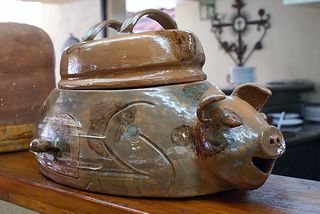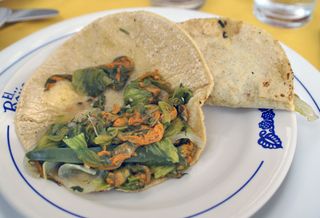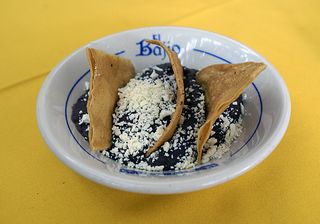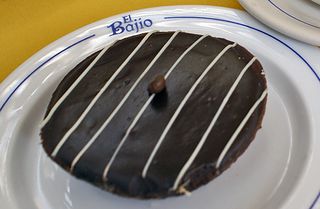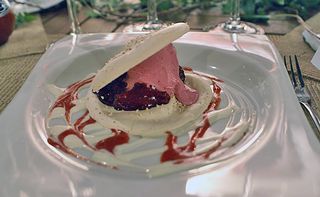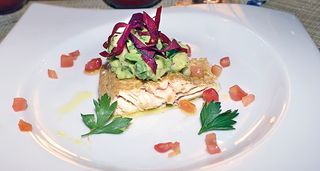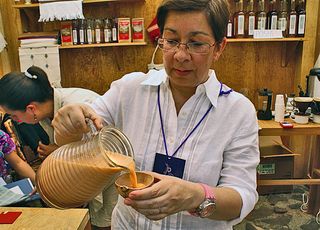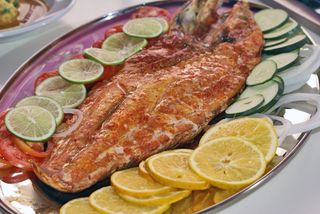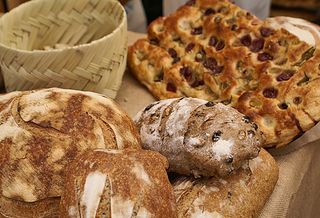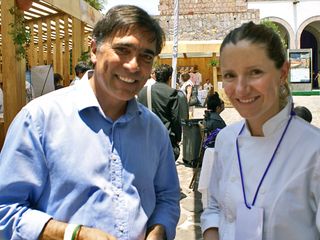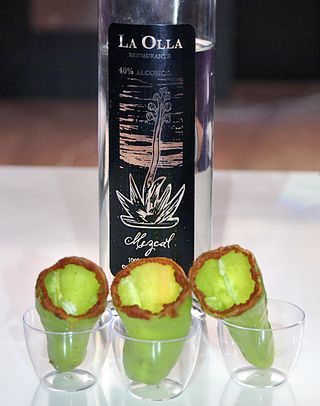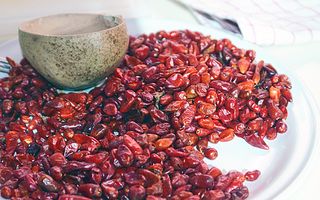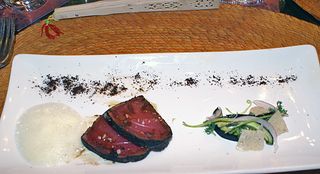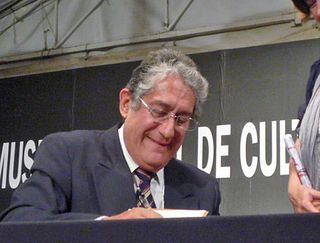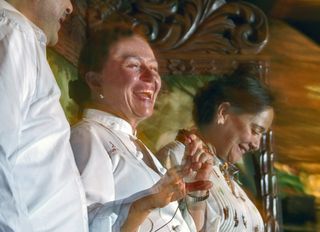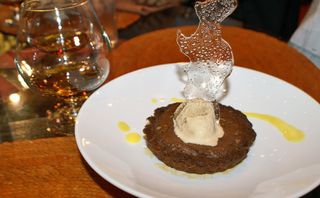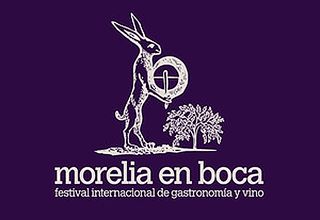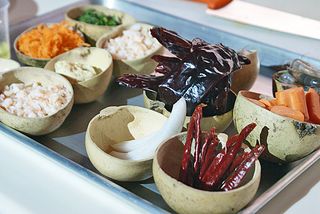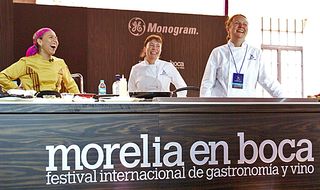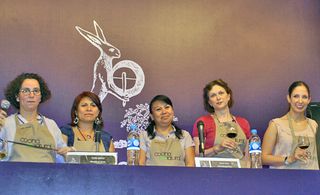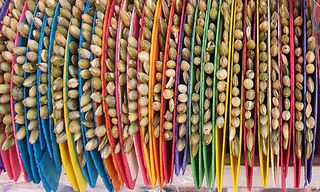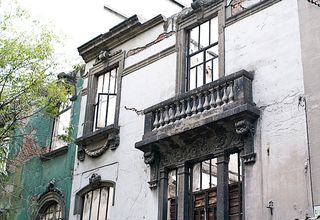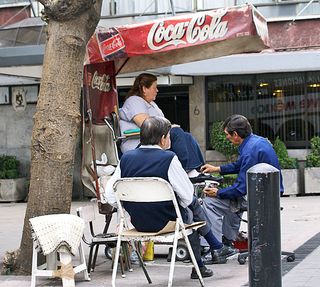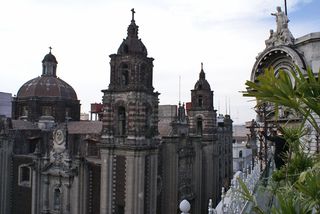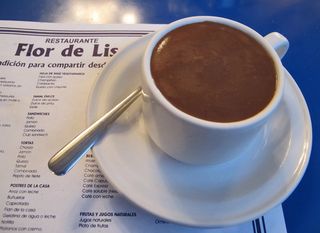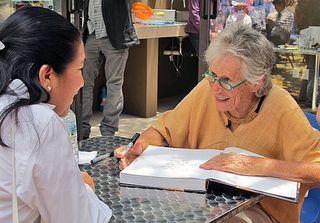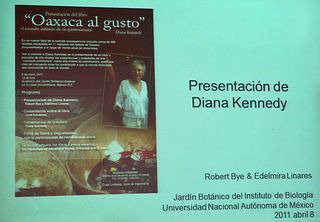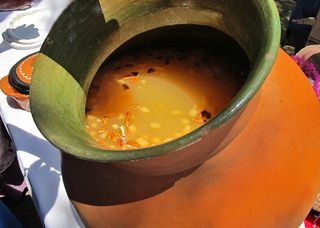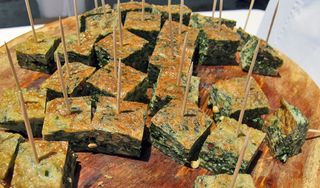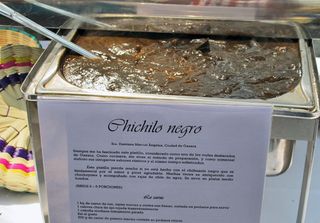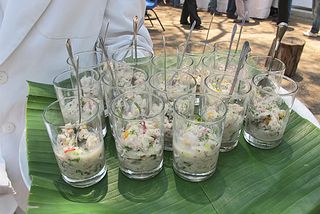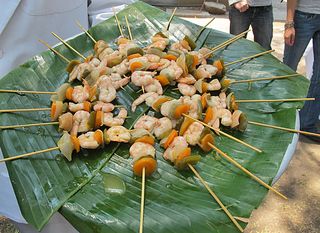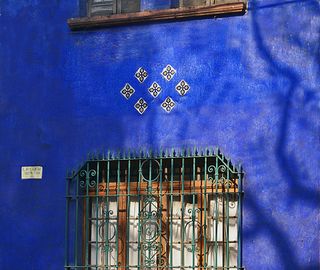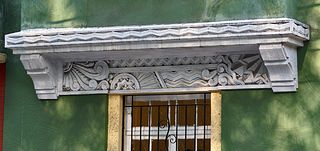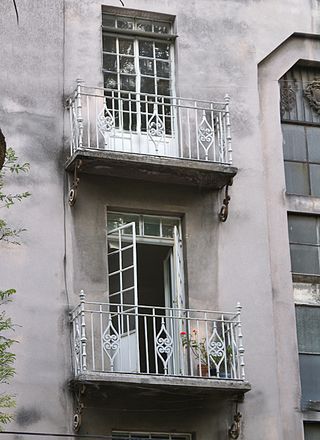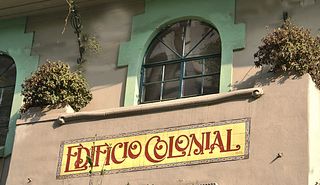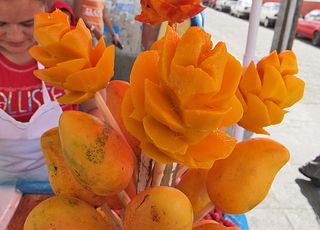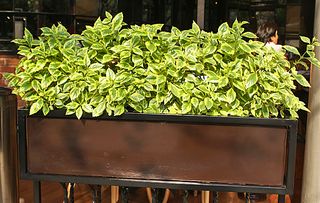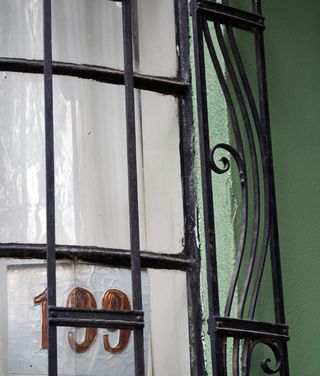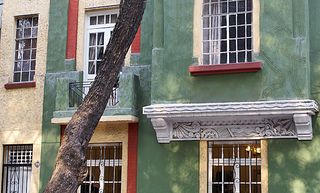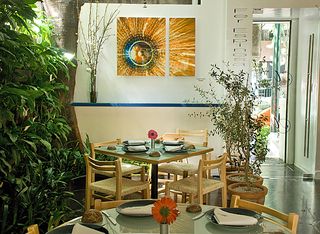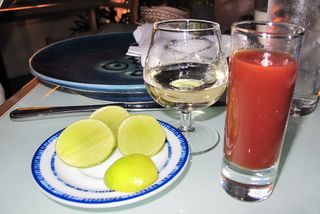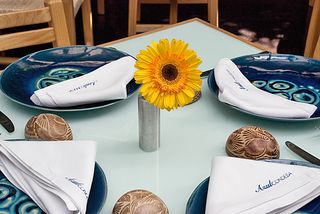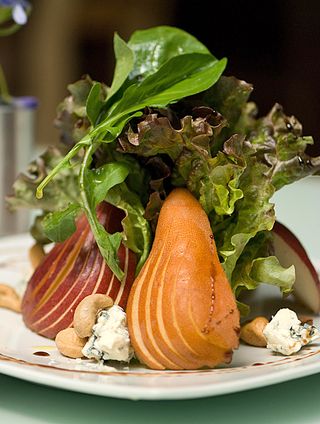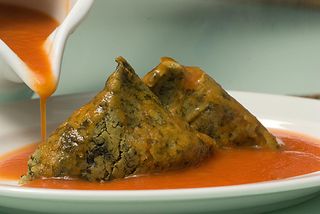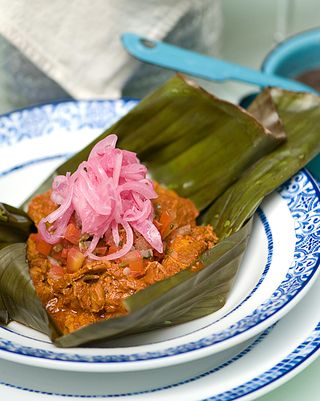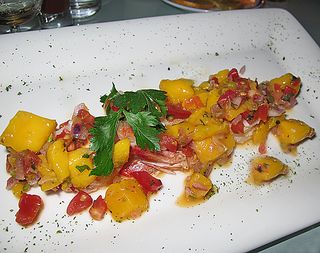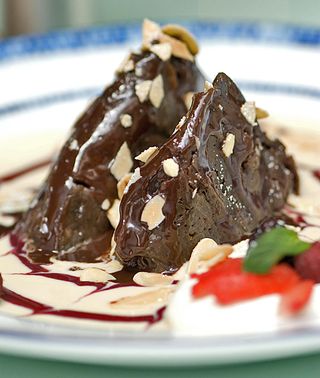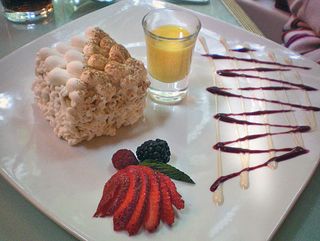
Mexico Cooks!' homemade alegrías, freshly turned from the parchment-lined baking sheet onto the cutting board and ready to cut into pieces.
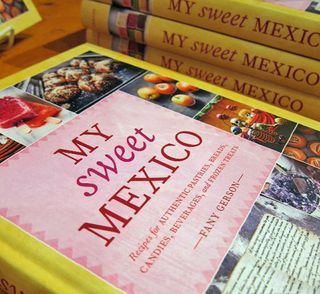
Lots of people are like Mexico Cooks! when it comes to cookbooks. We own hundreds of them, but actually cook from very few. For over a year, I've read and sighed with delight over the stories and recipes in Fany Gerson's My Sweet Mexico–and last week I finally prepared alegrías from her recipe. Fany calls them 'amaranth happiness candy'. Why? Happiness or joy is the English meaning of the Spanish word alegría.
A couple of weeks ago, friends at the superb new Cocina al Natural invited Mexico Cooks!' household to a wonderful comida en casa (main meal of the day at their home). For dessert, they proudly brought a big box of alegrías to the table. "They're home made!" they proclaimed. "No way!" we remonstrated. Well, yes, güey, it was the absolute truth. The alegrías were beautiful, professional, delicious, and prepared from Fany Gerson's cookbook, which is actually in my kitchen library. We joyfully crunched them down.
According to Ricardo Muñoz Zurita, legendary Mexico City chef and author of the Diccionario Enciclopédico de Gastronomía Mexicana (Encyclopedic Dictionary of Mexican Gastronomy), alegrías are the oldest candy in Mexico. In pre-Hispanic times, before sugar cane had been introduced to New Spain (now Mexico), the amaranth candy was sweetened with maguey cactus honey. In that long-ago era, this candy had a highly religious meaning. Shaped in the form of a cookie or cracker, it was utilized for communion in indigenous rituals and also was made into huge sculptures of pre-Christian gods. Because these god-figures appeared so horrible to the Spanish, they outlawed the use of this candy after the conquest. But in the 16th century, a Spanish monk had the idea to mix amaranth with bee honey. Rejoicing over the return of the right to eat this sweet treat, the ancient inhabitants of Mexico named it what they felt 'alegría'–joy.
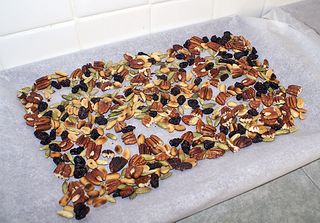
The topping mixture for the alegrías–raisins and lightly toasted pecans, peanuts, and pepitas (pumpkin seeds), spread onto the parchment-paper lined baking sheet.
The following week, Betty Fussell, our wonderful friend from New York, invited us once again to visit her in Tepoztlán, just south of Mexico City. The light bulb went on: alegrías would make a great hostess gift!
The recipe for alegrías is simplicity itself. Here's the recipe, taken straight from My Sweet Mexico.
Alegrías (Happiness Candy)
Ingredients
1/2 cup chopped toasted pecans
1/2 cup chopped toasted peanuts
1/2 cup toasted pepitas (pumpkin seeds)
1/2 cup dark raisins
8 ounces chopped Mexican piloncillo (coarse brown sugar) or standard dark brown sugar, packed
1/2 cup honey
1/2 teaspoon freshly squeezed lemon or lime juice
4 ounces puffed amaranth seeds
Equipment
Large bowl
Large spoon
15" X 10" X 1/2" baking sheet
Parchment paper
Medium sauce pan
Cutting board
Sharp knife
Preparation
Line the baking sheet with parchment paper. Combine the pecans, peanuts, pumpkin seeds, and raisins in a bowl and then spread them on the prepared pan.

Piloncillo, honey, and lemon juice in the pot.
Combine the piloncillo, honey, and lemon juice in a medium pot over medium heat and cook until the piloncillo has melted and the mixture has thickened slightly, about 5 to 10 minutes.
Squeezing the jugo de limón (lemon juice) into the mixture is simplicity itself using a Mexican lime squeezers. You can find one in metal or plastic at your local Latin market.
Remove from the heat and add the amaranth seeds, stirring quickly to mix everything well.
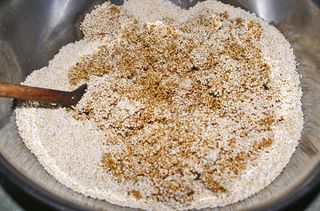
Mixing the cooked and thickened piloncillo, honey, and lemon juice mixture with the amaranth seeds.

The amaranth mixture, patted firmly into the parchment-lined baking sheet. Remember that the nuts and raisins are the topping–they're on the other side of the alegrías. Once this rectangle is completely cool, it will be firm and you will easily be able turn it over onto a cutting board.
Pour the amaranth mixture into the baking pan with the nuts, seeds, and raisins, and carefully press down with slightly dampened hands (so you don't burn yourself) to compact the mixture.
Allow to cool completely, 30 to 40 minutes at least, then invert onto a cutting board. Cut the mixture into the desired shapes with a sharp knife. If your mixture seems to be sticking to the knife, simply dip the knife into hot water, dry, and continue cutting.
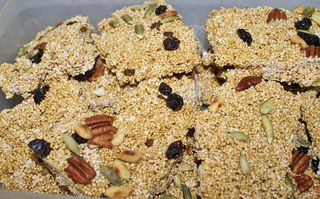
Freshly made alegrías, ready to travel!
Mexico Cooks!' alegrías turned out really crispy and hard to cut, so instead of battling with the knife, I simply broke them into reasonable-size pieces and packed them in a tightly sealed container to travel the next day.
Were the alegrías a hit? They definitely were! Five of us ate almost all of them. We left all but a couple of the remaining pieces with our hosts, but we had to bring a little bit home. Minimal ingredients, minimal cooking, and maximal enjoyment: what more can you ask for from pre-conquest Mexico! Your family will love them and you can send a big thank you to Fany Gerson at My Sweet Mexico–and to Mexico Cooks!.
If you don't have your copy of the book yet, look over on the left-hand sidebar and just click on the book cover. That click will take you to My Sweet Mexico's Amazon.com page. Grab the book today and make your family a sweet Mexican treat as soon as it's in your kitchen.
And by all means visit our friends at Cocina al Natural. Their website and their videos are marvelous. In the very near future, Mexico Cooks! will be partnering with them to post some of the videos with English-language subtitles. We're all very excited about this new venture.
Looking for a tailored-to-your-interests specialized tour in Mexico? Click here: Tours.
